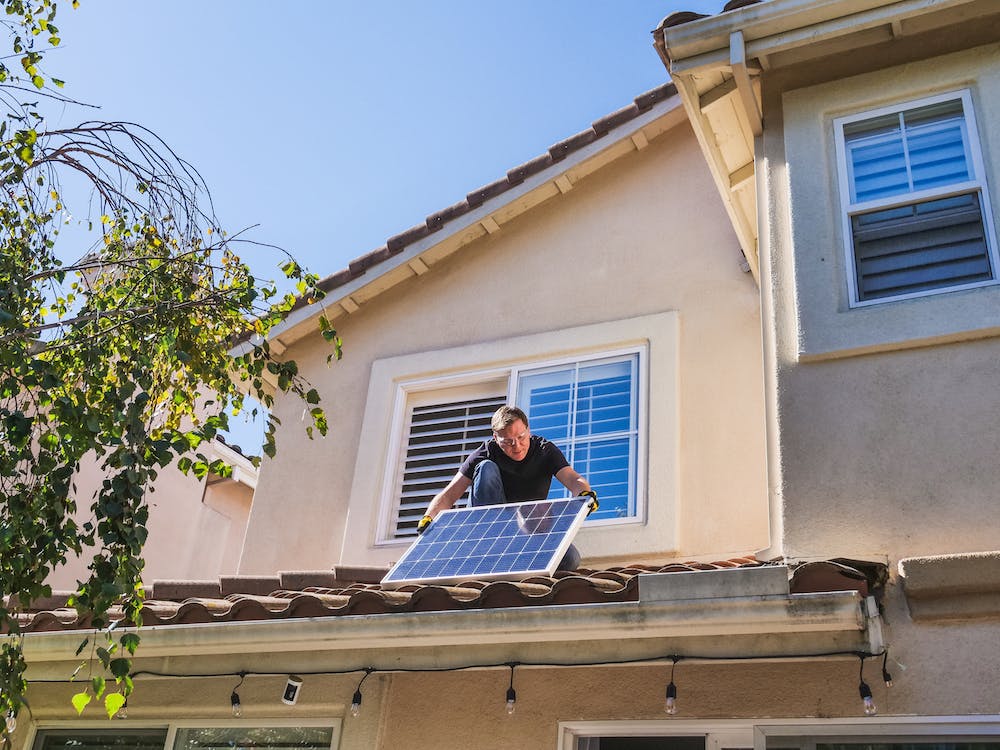
A man fitting domestic solar panels. Image by Kindel Media via Pexels
New data from NTT DATA, based on UK government statistics, suggests that 73% of all solar deployment in 2022 was domestic.
The figures suggest that domestic solar installations now make up 27% of the UK’s solar capacity, with a cumulative deployment of 4.2GW.
High energy prices have seen the deployment of small scale domestic solar (<10kW) increase at the fastest rate since 2016, but there are concerns that the electricity grid lacks the capacity to cope with this increasing electricity generation.
NTT DATA UK&I say that domestic installations again make up more than a quarter (26%) of the UK’s solar capacity.
2022 saw the highest rate of solar farm refusal for five years, which may be causing underinvestment in the sector. NTT DATA says that “these findings may reflect the lack of tax relief for renewables investments compared to oil and gas.”
The low price of the Smart Export Guarantee for domestic solar producers to export to the grid, (4.9p/kWh – just over 13% of the current wholesale price of 37.2p/kWh) means that there has been a boom in solar PV owners using battery storage to store their excess energy rather than selling it to the grid.

Cumulative deployment of small scale solar in the UK
However, some industry groups say that the government’s statistics on the deployment of solar in the UK are inaccurate. Solar Energy UK told SPP that: “The government’s figures are well known to be seriously flawed and do not capture the true state of deployment in the UK. We would like to see its procedures improved, via our work with the Solar Taskforce.”
So while the deployment of domestic solar is certainly increasing, it may make up less than 73% of new deployment if the figures are not accurately capturing commercial rooftop deployment or other types of solar installations.
Meanwhile, a new report from Cornwall Insight today suggests that power prices in Great Britain will remain elevated beyond 2022 levels until the late 2030s, making the increased deployment of utility-scale solar even more vital to meeting the UK’s energy needs and achieving energy security from global price shocks.

